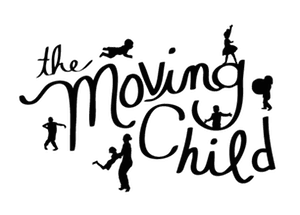We are wishing all you Dads out there in the world a very Happy Father’s Day!
Know you have an essential role in your child’s emotional, physical, mental and spiritual development.
When I reflect on my childhood, I can remember my father’s big hands and arms playfully holding my body in various positions above and around his body, and playing ‘rough and tumble’. I can remember the warmth, the laughter between us, and how the strength of his body playing with my strength helped us to bond. This is a visceral memory that lingers in my soma. Of course anyone of any gender orientation can engage ‘rough and tumble’ movement play with children and this models a balance of gender roles. That said, fathers traditionally in many cultures (and currently) have a special role to play in their child’s movement development in terms of the channelling and containment of children’s aggressive impulses. Not only because of a father’s testosterone and natural inclination to rough and tumble, but because of their strength, low voice, and masculine energy. Dads are different. So we invite all you fathers of the world to offer your body and presence as the gifts they are, and even if you were not played with as a child, your child can tell you exactly what they would like from you, if you ask for their ideas. Perhaps they would like you to be a horse, a statue they can crawl up, a turning wheel, etc.
Here are some tips and skills to practice when engaging rough and tumble play with your children, for best results.
The Moving Child’s Top 7 Tips for Rough and Tumble Play:
- Build into your game the rules of engagement: make sure the child has given a thumbs up or “yes” in agreement to all terms. A suggestion is that anyone can call a pause at any time, or say STOP or PAUSE, and then each person has to stop and check in with each other. Make gentle loving eye contact if comfortable for the child. It’s a great opportunity to also name we are not hitting or smacking or hurting each other, etc.
- Clear the space, make it safe, so no head bonks or other injuries occur. Think about the type of floor you are moving on, and any need to lay down some mats, or pillows or just how to make things safer and to have good traction (take socks off on slippery floors).
- It is your job as the adult to build in the self-regulation practice (which this game also naturally does).What this looks like is finding a balance of activation for your child’s nervous system: start as a mouse, build up to a cat, then to a tiger, and back down again. Or just free wrestle, while taking breaths and slowing down at moments, etc. This should come naturally to you.
- Cue your child to breathe, if they are not breathing, or if they are escalating too much.
- Tickling that goes too far can be extremely uncomfortable for children. Consider other ways of having fun.
- Never ever overpower your child, in the sense of wishing to be a “winner” versus them being a “loser”. Do not use your own adult strength in any type of power over or cruel way. This can be subtle, but kids feel it immediately. You want to empower your child to feel their strength, and feel how they can use that strength in safe ways.
- If your child is seemingly becoming a little too excited (what we may call “hyper-aroused” in their nervous system), then you can do things like massage their back or arms, or feet and legs; hold and rock them; place a heavy blanket on their body or tummy; sing; breathe together; and/or have a glass of water.
Have fun!

